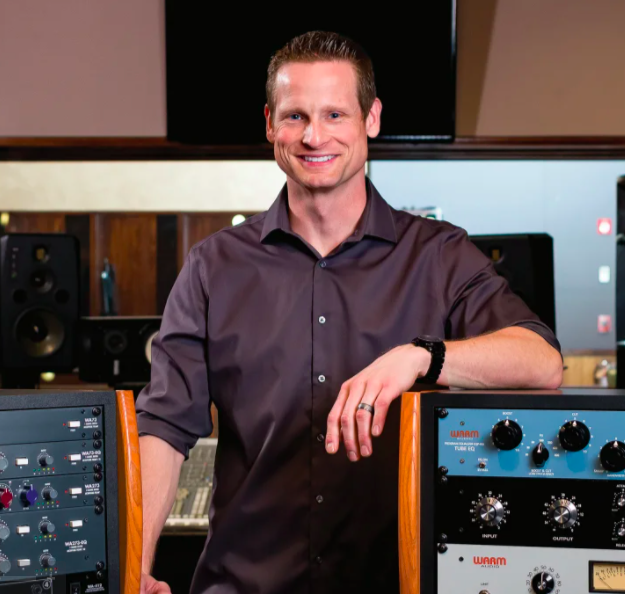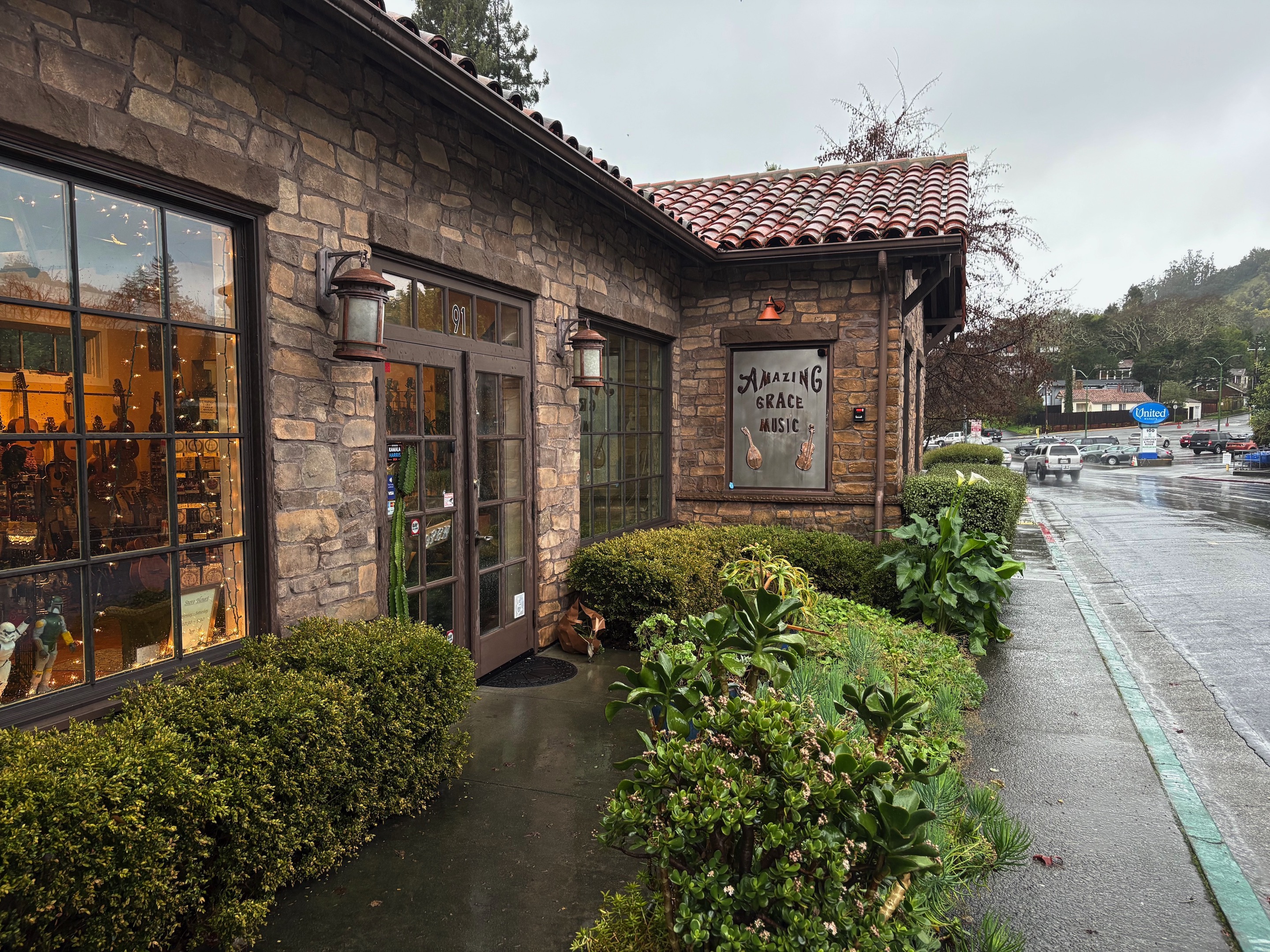
Warm Audio's Bryce Young
HQ: Austin, Texas
Founded: 2011
Employees: Roughly 40
Best selling product: WA-47 and WA-87 R2 Tube Condenser Microphones
and WA73-Series Preamps
Fun Fact: In addition to running Warm Audio, Young launched the partner company 512 Audio in August 2021 with the goal of bringing vintage analog-quality sound to podcasters and other at-home content creators.
How do you start your day?
I get up around 6:30 am, wake up my kids, get them ready for the day and then take them to school. I try to get a workout in before going to the office around 9 am. When I arrive, I dive right into e-mail to see if there’s anything urgent I need to deal with. After that, I look at our financials and banking. I’m a big numbers guy and love being heavily involved in that side of the company.
To someone who has never heard of Warm Audio, how would you introduce the company?
We create affordable analog recording equipment based on classic pieces of gear. Our WA-47 and WA-87R2 microphones are based on the classic 47- and 87-style microphones, and our 73-Series Preamps are based on vintage Neve console preamps. While it’s extremely difficult to get something that’s manufactured in 2022 to sound exactly like something that has 70 years of use on it, our goal is to have our products sound as good, or even better, than the original. “Better sounding” can be subjective of course, but we can quantify certain things like building in a lower noise floor or better frequency response, for example.
We just want any professional who plugs in our gear to listen and say, “Wow.”
How did you decide to found Warm Audio?
I’m a musician and engineer, and I recorded and produced records in college. I’m also a vinyl collector. I got obsessed with getting great analog tones and began wondering how I could create a way for people to make great recordings in their homes. This was in the late 1990s, and there weren’t many options for gear under $1,000 that would provide professional-quality sound. I started taking pieces of vintage analog gear apart and figuring out how to build my own versions — it didn’t make sense to me that vintage preamps had to cost $4,000 when they didn’t actually have that many components inside. With my own company, I wanted to change the level of quality people could receive from a product at an affordable price point.
When did you first realize that you could achieve that goal?
When I built my very first prototype and priced it out with a factory. I remember thinking, “This thing sounds amazing, and I could sell it for $450 in a market where there’s nothing this good available for under $1,000.” That’s when I knew it was going to be a hit. I made some tough phone calls and convinced a distributor to take on the product.
How do you develop your products?
We start by borrowing, renting or buying vintage analog gear as a reference, and we often try to get our hands on multiple units, since they all sound a little different. Then when we design our own products, we focus on sourcing top-quality components. If you’ve got good guts that match the vintage schematic, it may not sound completely identical to the original, but it’s still going to sound amazing. We order our components in high quantities to get the price down, so we’re essentially running a mass production operation with boutique quality.
How has that approach worked for you?
It’s made us unique among boutique manufacturers, most of which run operations that are low volume, very expensive and not as efficient. Our approach is to make a tiny bit of money on each unit and make as many as we can at such a good price that it becomes a no-brainer. If you make something that gives such good quality at such a low price, it’s going to sell.
You were recently recognized by INC. Magazine as one of the country’s fastest-growing companies.
A lot of that growth happened in the last few years, especially during the pandemic, as more people were stuck at home recording and creating. On a broader scale, I think the word about Warm Audio is finally out. When we started, there was a lot of skepticism about whether our products could really be as good as vintage gear. Now, we’re seeing famous producers and bands recording with all of our stuff because it’s reasonably priced, yet punches far above what you pay.
I’m guessing it takes a lot of capital up front to buy components in great enough volume to keep your retail prices reasonable and quality high. How did you first pull that off?
It’s difficult to break into this industry. You need to have capital and carry stock for distributors to take you seriously, and you always need to have stock on hand to sell. Nobody wants to work with a company that can’t reliably fill orders. The key for me was partnering with the right distributor during our first six years of business — they financed orders, carried lots of stock and got our product into retailers. Without that, it would have been very difficult to grow the company. I was very lucky to make that deal — I just got the owner of the distribution company on the phone, and somehow convinced him to work with me.
Have the pandemic-related supply chain disruptions been an issue for you?
Our supply chain has certainly been disrupted during the pandemic, and we had to make the very tough decision early on that we were going to keep our products available, no matter what the cost to our company. In 2020 and 2021, we air-freighted loads of product from our factories. Shipping by sea is far less expensive, but can take twice as long these days, and lead to all sorts of disasters when it comes to product availability. Even though we had to absorb the increased cost of air shipping, it was worth it to keep our products available and regularly selling.
How does Warm Audio approach quality control?
We take quality very seriously and the biggest department in our company is devoted to quality control. We have team members here in Austin who open every product we make — except for boom arms and cables — and hand test them before they’re repackaged and sent out. We want to know what our customers are getting, and for our products to be as close to perfect as possible.
What’s newest and most exciting for you at Warm right now?
We recently built a world-class recording studio in our company headquarters. It’s around 3,500 square feet with a huge live room and 25-foot ceilings, SSL consoles, and Warm Audio gear everywhere. We built it to be one of the best studios in Austin.
Why did you decide to build a studio?
We want to be a part of the culture that we support. We look forward to bringing in local bands, shooting music videos, all sorts of fun stuff. At the end of the day, none of us come to work because we love spreadsheets and purchase orders. We come because we love preamps and microphones and music. And from that point of view, having our own state-of-the-art recording studio is a very exciting thing.
How would you describe yourself as a leader and manager?
I try to be very real. I’ve worked for several companies that hid too much from their employees, and I didn’t want to do that in my own company. I think it’s important for everyone to know if we had a good quarter or a bad one, if we’re doing great or if there are mistakes we need to work together to correct. Being a small company, everybody wears a lot of hats, and I don’t have time to micromanage. I’ve always tried to create a company of little entrepreneurs. When I hired my first shipping person, for example, she had to figure out how to navigate foreign shipping, hire a team, teach them, integrate shipping software, adapt as the company grew and changed, and keep coming up with new ideas. I’m always very happy to guide and advise, but if you’re looking to be told exactly what to do, we’re not the best company for you. [Laughs.]
Is there anything about Warm Audio that you particularly want Music Inc. readers to know?
I’m a truly passionate analog audio guy. When people purchase our products, they’re not just buying from some cold-hearted businessman who doesn’t care about what he’s selling. Warm Audio is the opposite of that. Nearly all of our employees are guitar players, recording buffs or graduates of recording schools. This company is a passion project that turned into a business.
If not music, what would you be doing?
I’m a family man and believe it’s my job to go out, work hard and put food on the table. Before becoming a father, I sold VoIP phone systems for several years and feel that I’m wired for sales, so I would probably gravitate towards some sort of sales career.











